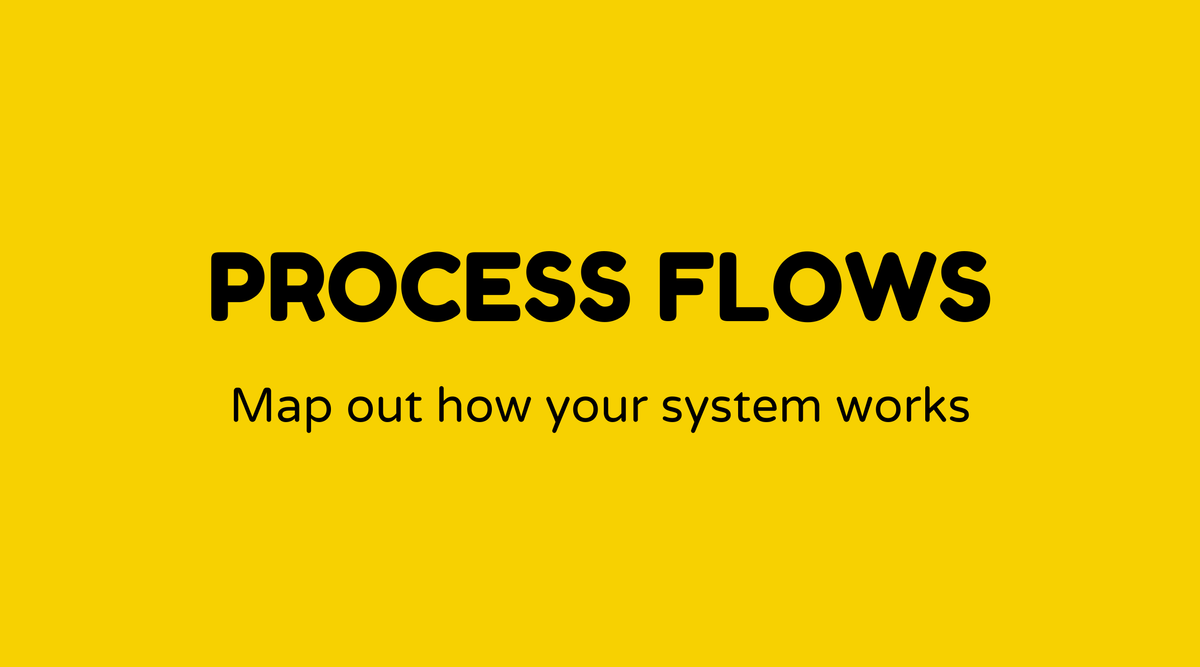Process flows

Overview of Process Flows
Exploring the intricacies of process flows offers valuable insights! If you've ever tackled a challenging project, you know how important a structured outline can be. Process flows fulfill this need by mapping out the steps in any activity or system, ensuring that all participants are aligned.
In the realms of business and technology, a thorough grasp of process flows can greatly enhance productivity. While they may sound academic, these are dynamic documents that can evolve alongside your organization. For further information, consider reviewing internal resources or attending project management workshops.
Why Process Flows Matter
Imagine crafting a masterpiece without a design—it's a challenging endeavor that often leads to chaos. This is where process flows become essential. They help minimize mistakes, enhance communication, and clarify objectives. By representing everything visually, everyone understands the timeline and sequence of events.
Research on project management and business processes suggests that utilizing process flows can lead to increased efficiency, shorter project durations, and lower expenditures. They can be an invaluable tool in driving an organization towards higher productivity.
What is a Process Flow?
Before we discuss how to create one, let’s clarify what a process flow actually is. In simple terms, it's a diagram that visually outlines each stage of a process, detailing everything from the initial input to the final output.
Process flows can take many forms: flowcharts, swimlane diagrams, BPMN diagrams, and more. Each type has its own advantages depending on the intricacies of the task at hand. Tools such as Microsoft Visio or Lucidchart are excellent choices for creating detailed diagrams.
How to Create Process Flows
Developing a process flow involves more than casually listing steps. Here’s a guide to crafting effective process flows:
- Identify the Process: Define the scope and key elements of the process you are illustrating.
- Gather a Team: Assemble a diverse group familiar with the process to ensure a comprehensive approach.
- Choose the Appropriate Tool: Use specialized software like Lucidchart or Microsoft Visio.
- Outline the Steps: Clearly indicate each step along with any decision points.
- Review and Modify: Once drafted, examine the process flow for any inaccuracies or inefficiencies.
- Implement and Observe: Activate your process flow and watch for any obstacles.
These steps provide a foundation, but maintain flexibility; your process may have specific needs that require adjustments.
Examples of Process Flows
There are numerous applications for process flows across different industries. Here are a few examples:
- Employee Onboarding: A linear process flow detailing steps from job offer to orientation.
- Product Recalls: Often involves intricate flowcharts with multiple decision points to ensure compliance with legal and quality standards.
- Customer Service Handling: Utilizes swimlane diagrams to categorize tasks by department or role.
If you want to check templates or software in action, viewing tutorials on platforms like YouTube could deepen your understanding.
FAQs
What tools are optimal for creating process flows?
- Suited tools include Lucidchart, Microsoft Visio, and Creately, offering various templates to help you begin.
How detailed should a process flow be?
- Detail levels vary. More complex processes benefit from greater detail, while simpler ones may require only high-level steps.
Can process flows be updated?
- Yes, they should be regularly updated. As systems evolve, so should the flows to ensure efficiency.
Why use visual representations when written documents exist?
- Visuals simplify intricate information and enhance team collaboration. They are quicker to reference during busy project phases.
How do process flows boost productivity?
- By outlining steps and identifying bottlenecks, teams can resolve issues quickly, thus improving overall efficiency.
Which industries gain the most from process flows?
- Almost every industry benefits, but manufacturing, healthcare, and IT rely heavily on them for quality and compliance maintenance.



